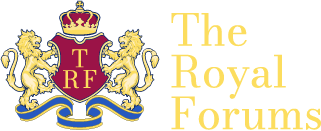Blog Real
Imperial Majesty
- Joined
- Jan 9, 2013
- Messages
- 12,646
- City
- Lisboa
- Country
- Portugal
I noticed that does not exist in the TRF no page about the Holy Roman Empire. So I decided to create one.
Not by name perhaps but otherwise can largely be covered in the Royal Families of Germany and Austria subforum.I noticed that does not exist in the TRF no page about the Holy Roman Empire. So I decided to create one.
When Maximilian II reigned as Holy Roman Emperor, he allowed the publication of Lutheran liturgy and even had Lutherans at court.
What did the Pope and the Vatican officials think about this?
The Holy Roman Emperor, originally and officially the Emperor of the Romans (Latin: Imperator Romanorum, German: Kaiser der Römer) during the middle ages, and also known as the German-Roman Emperor since the early modern period (Latin: Imperator Germanorum, German: Römisch-deutscher Kaiser, lit. 'Roman-German emperor'), was the ruler and head of state of the Holy Roman Empire. The Empire was considered by the Roman Catholic Church to be the only legal successor of the Roman Empire during the Middle Ages and the early modern period. The title was held in conjunction with the title of King of Italy (Rex Italiae) from the 8th to the 16th century, and, almost without interruption, with the title of King of Germany (Rex Teutonicorum, lit. 'King of the Teutons') throughout the 12th to 18th centuries.
In theory and diplomacy, the emperors were considered primus inter pares, regarded as first among equals among other Roman Catholic monarchs across Europe.[3] In practice, an emperor was only as strong as his army and alliances, including marriage alliances, made him. However the Reformation of the 16th century had made managing the empire more difficult because it made the Empire's role as "holy" questionable in Protestant parts of Europe.
From an autocracy in Carolingian times (AD 800–924) the title by the 13th century evolved into an elective monarchy, with the emperor chosen by the prince-electors. Various royal houses of Europe, at different times, became de facto hereditary holders of the title, notably the Ottonians (962–1024) and the Salians (1027–1125). Following the late medieval crisis of government, the Habsburgs kept possession of the title without interruption from 1440 to 1740. The final emperors were from the House of Habsburg-Lorraine, from 1765 to 1806. The Holy Roman Empire was dissolved by Francis II, after a devastating defeat by Napoleon at the Battle of Austerlitz.
The emperor was widely perceived to rule by divine right, though he often contradicted or rivaled the pope, most notably during the Investiture controversy. The Holy Roman Empire never had an empress regnant, though women such as Theophanu and Maria Theresa exerted strong influence. Throughout its history, the position was viewed as a defender of the Roman Catholic faith. Until Maximilian I in 1508, the emperor-elect (Imperator electus) was required to be crowned by the pope before assuming the imperial title. Charles V was the last to be crowned by the pope in 1530. Even after the Reformation, the elected emperor was always a Roman Catholic. There were short periods in history when the electoral college was dominated by Protestants, and the electors usually voted in their own political interest.
The Holy Roman Empire never had an Empress Regnant or a Protestant Emperor elected even after Reformation.
Maria Theresa could not be elected Holy Roman Empress but her husband Francis was elected as Emperor.
Not always the Habsburgs were elected emperors. For example, after the death of Charles VI and the extinction of the original house of Habsburg in male line, before Maria Theres'a husband, Francis of Lorraine, became emperor with the support of his wife, a Bavarian prince from the House of Wittelsbach, Elector-Duke Charles Albert of Bavaria, was elected. He contested the Habsburgs' heritage with Maria Theresa and her husband. He gained enough support among the electors of the time, three of whom, including himself, were Wittelsbachs. Additionally, the French persuaded the electors of Brandenburg (Hohenzollerns) and Saxony (Wettins) to support the Bavarian. Charles Albert's candidacy was even stronger considering he succeeded in opening a dispute with Maria Theresa over her rights to Bohemia, which was also an electorate (in December 1741, shortly before the election took place in Frankfurt in February 1742, Charles Albert was even crowned King of Bohemia after conquering the country). Maria Theresa thus could not be considered at the election as neither an eligible candidate nor elector as her Bohemian throne was temporarily lost and officially denied. In effect, the Bavarian was elected and crowned emperor. Charles VII, as became known, shortly afterwards eventually lost Bohemia and the Austrians took revenge in invading Bavaria. The Emperor died in 1745 and his son and successor, Maximilian III Joseph, quickly made peace with Maria Theresa, promising his support for the election of Francis.Towards the end of the Empire, how many electors were Protestant? I never fully understood why the ruler of the Habsburg lands (or, in Maria Theresa's case, her husband) was always elected the Holy Roman Emperor. Could you explain?
In the early 16th century, Henry VIII and Francois I both wanted to be elected Holy Roman Emperor
At that time the two factions, the Protestants and Roman Catholics factions were destabilizing the political institutionsWhy did Holy Roman Emperor Rudolph II reverse his father Maximilian II's tolerant policy toward Protestantism?
